Navigating Indiana’s Legislative Landscape: How the Process Works and How You Can Get Engaged
Understanding how a bill becomes law in Indiana is essential for constituents aiming to influence state legislation, especially during the swift-moving second half of the legislative session. This period is characterized by rapid developments, making it challenging to stay informed and engaged.
The Life Cycle of a Bill in Indiana
The first session of every new two-year Indiana General Assembly convening can last up to 61 working or session days. Beginning in early January, this session cannot legally extend beyond April 30. The first regular session occurs in odd-numbered years and is often called the “long session” due to the legislative approval process of Indiana’s biennial budget.
The second regular session, which occurs in even-numbered years and is known as the “short session,” can extend for up to 30 working days but not beyond March 15.
The legislative journey involves several key stages:
- Idea Development: A proposal for new legislation can originate from various sources, including legislators, constituents, news stories, interest groups, public officials or the Governor.
- Bill Drafting: The sponsoring legislator collaborates with the nonpartisan Legislative Services Agency (LSA) to draft the bill in proper technical form. Lawmakers are generally allowed to introduce 5-10 bills each session.
- Introduction and First Reading: The bill is introduced in either the House or Senate and undergoes its first reading by title to the full legislative body.
- Committee Assignment and Action: The bill is assigned to a relevant committee, where it may be scheduled for a public hearing. During the hearing, committee members and the public can discuss the bill’s merits and suggest amendments. The committee then votes to advance, reject or table the bill.
- Second Reading: If advanced, the bill returns to the house of origin, where legislators can propose further amendments.
- Third Reading and Vote: The full chamber debates and votes on the bill. If it passes by a simple majority, it moves to the other legislative chamber to undergo a similar process.
- Conference Committee: If there are differences between the House and Senate versions, a conference committee—comprising two members from each chamber—is formed to reconcile discrepancies. All four members must agree on the final language for the bill to proceed. Conference committees are perhaps the hardest part of the process to predict, as conferees can be removed and added depending on the direction the negotiations are taking, and information often isn’t publicly available until an agreement has been reached.
- Governor’s Action: Once both chambers pass the reconciled bill, it is sent to the Indiana Governor, who can sign it into law, veto it or allow it to become law without a signature after seven days. New laws take effect on July 1 of the year of passage unless otherwise specified.
The Accelerated Pace of the Second Half of Session
The second half of Indiana’s legislative session is notably faster-paced than the first half. Bills that have passed one chamber must clear the other within a compressed time frame, leading to swift proceedings and frequent amendments. This acceleration can make it challenging for constituents and even legislators to track changes and understand the current status of bills.
Challenges of the Conference Committee Process
The conference committee stage adds complexity to the legislative process. When the House and Senate pass different versions of a bill, conferees work to reconcile these differences. This process can be intricate, with negotiations happening rapidly and sometimes behind closed doors, making it difficult for the public to stay informed.
Staying Informed Amidst Rapid Changes
Given the swift developments during the latter half of the session, constituents can utilize several strategies to remain informed:
- Monitor official resources and channels: Regularly check the Indiana General Assembly’s website for updates on bill statuses, committee schedules and session agendas. Meetings are all broadcast online but can stretch out over hours and sometimes days.
- Subscribe to news outlets: Local news organizations often provide timely coverage of legislative activities, highlighting significant developments and offering analyses.
- Find credible sources to follow on social media: You can follow your lawmakers (if they’re on social media) as well as local or statewide news outlets and groups you know are following the issues you care about.
- Engage with advocacy groups: Organizations like the Indiana Conservation Voters offer insights and updates on environmental legislation, helping constituents focus on issues they care about.
Engaging with Lawmakers When You Can’t Be at the Statehouse
Even if you cannot attend sessions at the Statehouse (most people can’t!), there are plenty of effective ways to communicate your views to legislators:
- Emails: Craft concise and clear emails stating your position on specific bills or issues. You can use this tool to look up your elected officials at the Statehouse and in Congress so you can contact them to share your thoughts. Many advocacy groups (including ICV!) have tools that allow you to customize messages and send them directly to lawmakers.
- Phone Calls: Contact legislators’ offices to express your opinions or seek clarification on legislative matters.
House of Representatives Telephone Center
(317) 232-9600 Voice or
(800) 382-9842 Voice (Democrat)
(800) 382-9841 Voice (Republican)
Indiana Senate Telephone Center
(317) 232-9400 Voice or
(800) 382-9467 Voice (Democratic or Republican)
(317) 232-0404 TDD
(800) 548-9517 Voice/TDD
- Social Media: Use platforms like Twitter and Facebook to engage with legislators, share your perspectives and participate in public discussions. The most commonly used legislative hashtag on social media is #INLegis.
- Traditional Letters: Personalized letters can have a significant impact, demonstrating a high level of commitment to the issue. You can address and send your letters using this format:
The Honorable John Doe
Indiana Senate
State House
200 W. Washington Street
Indianapolis, IN 46204
Dear Senator Doe:
The Honorable John Doe
Indiana House of Representatives
State House
200 W. Washington Street
Indianapolis, IN 46204
Dear Representative Doe:
To find detailed contact information for your elected officials, you can look them up using this tool. Additional resources about the current legislative session are available here.
By staying informed and utilizing these communication channels, constituents can effectively participate in Indiana’s legislative process, ensuring their voices are heard even when they cannot be physically present at the Statehouse.



